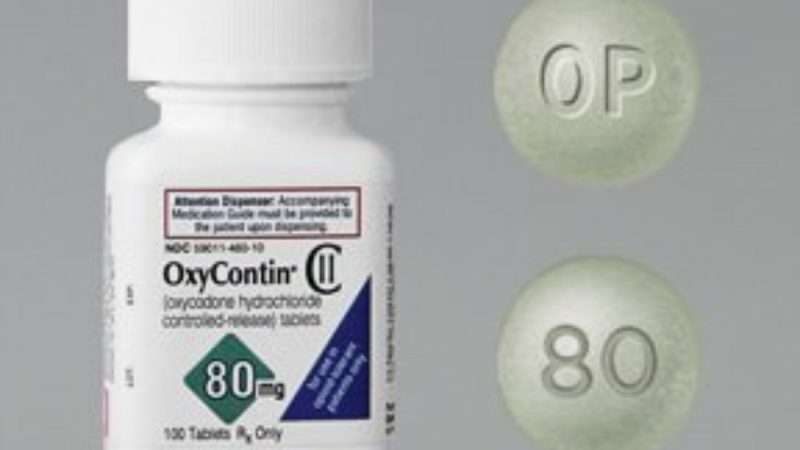
After OxyContin manufacturer Purdue Pharma filed for Chapter 11 bankruptcy in 2019, members of the Sackler family, which controlled the company, arranged a resolution that included personal protection from civil liability for contributing to opioid-related deaths. That shield was part of a mass settlement that promised myriad litigants a total of $6 billion.
The Supreme Court narrowly rejected that deal today. "The bankruptcy code does not authorize a release and injunction that, as part of a plan of reorganization under Chapter 11, effectively seeks to discharge claims against a nondebtor without the consent of affected claimants," Justice Neil Gorsuch writes for the majority in Harrington v. Purdue Pharma, which overturns a contrary 2023 ruling by the U.S. Court of Appeals for the 2nd Circuit.
"Today's decision is wrong on the law and devastating for more than 100,000 opioid victims and their families," Justice Brett Kavanaugh writes in a dissenting opinion joined by Chief Justice John Roberts, Justice Sonia Sotomayor, and Justice Elena Kagan. Yet both sides take for granted a highly dubious proposition: that "the opioid crisis" was triggered by OxyContin, a timed-release version of oxycodone that was introduced in 1996.
The Food and Drug Administration initially accepted the notion that OxyContin was less apt to be abused than other opioid pain medications because it was designed to gradually deliver the active ingredient. But that formulation proved easy to defeat by crushing the tablets for snorting or injection. In 2007 and 2020, Purdue Pharma pleaded guilty to federal charges related to its marketing of OxyContin, and the company faced thousands of lawsuits that blamed it for promoting addiction. It is therefore not hard to see why Purdue is widely portrayed as the central villain in deaths involving prescription opioids—a narrative that both Gorsuch and Kavanaugh uncritically accept.
"Between 1999 and 2019, approximately 247,000 people in the United States died
from prescription-opioid overdoses," Gorsuch writes. "Purdue sits at the center of these events."
Purdue "aggressively marketed" OxyContin and "downplayed or hid its addictive qualities," Kavanaugh says. "OxyContin helped people to manage pain. But the drug's addictive qualities led to its widespread abuse. OxyContin played a central role in the opioid-abuse crisis from which millions of Americans and their families continue to suffer."
Was OxyContin in fact "central" to the upward trend in opioid-related deaths? Estimates from the National Household Survey on Drug Abuse (now the National Survey on Drug Use and Health) indicate that nonmedical use of prescription pain relievers rose for 11 consecutive years before OxyContin was introduced, and then continued to rise. Even during the period highlighted by Gorsuch, OxyContin never accounted for a very large share of the prescription analgesic market.
Defending itself against all of those lawsuits, Purdue presented Drug Enforcement Administration data indicating that OxyContin accounted for just 3.3 percent of pain pills sold in the United States from 2006 through 2012. After adjusting for potency, ProPublica calculated that the product's "real" share of the market was more like 16 percent.
ProPublica's analysis is questionable, assuming the concern is how many opportunities nonmedical users have to get their hands on prescription opioids. But either way, the vast majority of pain reliever prescriptions involved products other than OxyContin, most commonly hydrocodone pills such as Vicodin and oxycodone pills such as Percocet. Those latter two types of products also figured prominently in the pain relievers consumed by nonmedical users, accounting for 75 percent of the total in 2018, according to the federal government's survey data. OxyContin, by comparison, accounted for 11 percent of nonmedical use that year.
The emphasis on Purdue's marketing of OxyContin implies that doctors and patients accepted the company's false assurances, resulting in unanticipated risks. But contrary to the conventional depiction of bona fide patients who accidentally became addicted to opioids they took for pain, nonmedical OxyContin users typically did not get the drug that way. According to a 2007 American Journal of Psychiatry study of OxyContin users admitted to drug treatment programs, 78 percent "reported that the drug had not been prescribed to them for any medical reason."
Since Gorsuch and Kavanaugh both fault Purdue for contributing to opioid-related deaths by misrepresenting OxyContin as abuse-resistant, it is instructive to consider what happened after the company tried to make good on that promise by reformulating the drug. The new version, introduced in 2010, was much harder to crush for snorting or injection. The idea was to deter nonmedical use, and the hope was that the reformulation would reduce addiction and opioid-related deaths. That is not how things worked out.
The reformulation of OxyContin was instead associated with an increase in deaths involving illicit opioids and, ultimately, an overall increase in fatal drug overdoses. Researchers identified that pattern by looking at the relationship between pre-2010 rates of OxyContin misuse, as measured by surveys, and subsequent overdose trends. They found that death rates rose fastest in states where reformulation would have had the biggest impact.
The root cause of that perverse effect was the substitution that occurred after the old version of OxyContin was retired. Nonmedical users turned to black-market alternatives that were more dangerous because their potency was highly variable and unpredictable—a hazard that was compounded by the emergence of illicit fentanyl as a heroin booster and substitute. Nowadays illicit fentanyl accounts for around 90 percent of opioid-related deaths, which have reached record levels in recent years.
Interventions like the reformulation of OxyContin and the broader crackdown on opioid prescriptions not only failed to turn the tide. They contributed to the upward trend that Gorsuch blames on OxyContin. The story that he and Kavanaugh credulously echo turned out to be deadly as well as misleading.
The post Divided Over Purdue Pharma Deal, SCOTUS Unites in Accepting a Dubious OxyContin Narrative appeared first on Reason.com.







